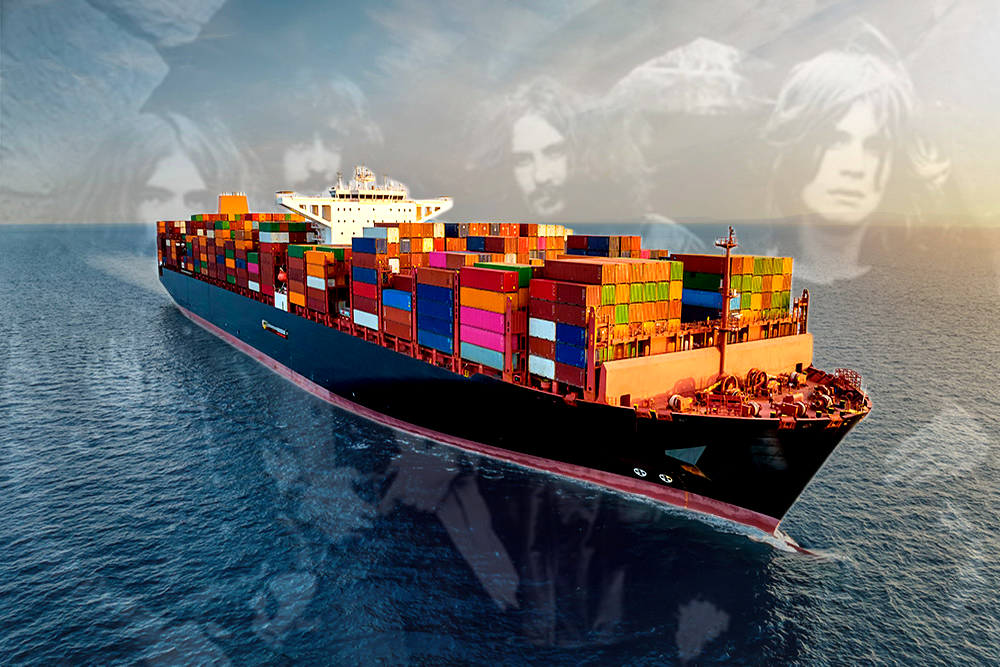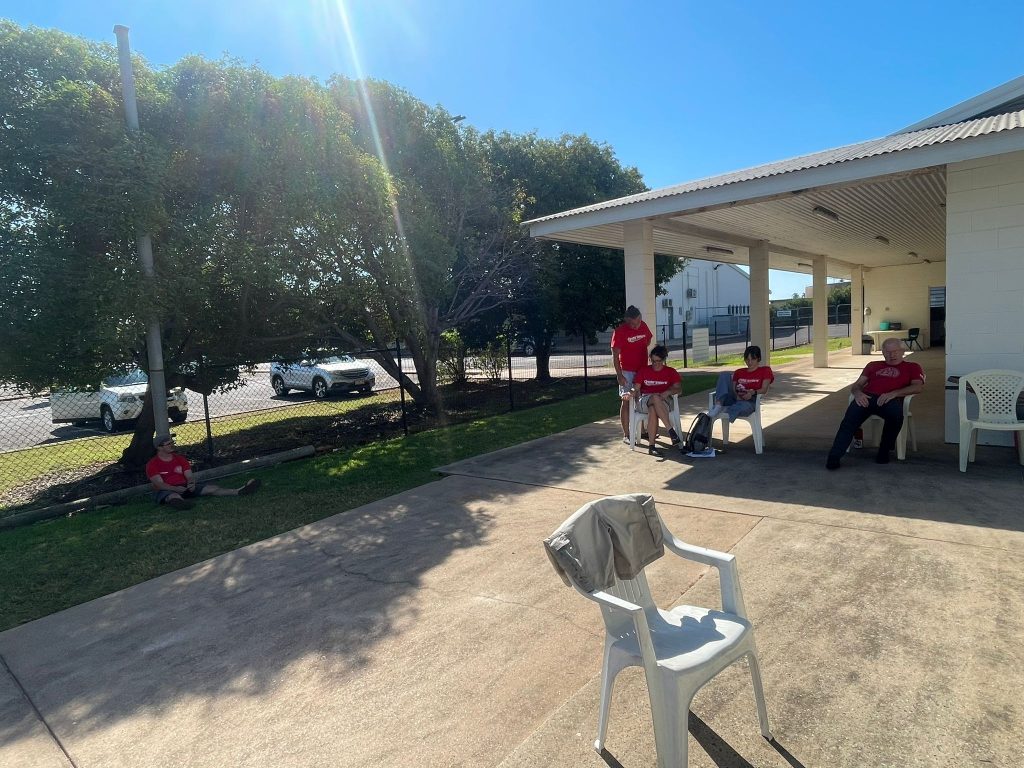Regno Unito, 1970.
I Black Sabbath sono in studio per registrare il loro primo album.
La sessione scorre, ma all’improvviso serve un brano in più per completare il disco. Dev’essere rapido, potente, incisivo. Un colpo di reni da ultimo giro, quando la gara sembra scappata via.
Tony Iommi prende la chitarra e, in pochi minuti, inventa un riff che fende l’aria come un rasoio. Geezer Butler butta giù le parole, rapido, rapidissimo, come se avesse il cronometro alla gola. Ozzy Osbourne le canta leggendo il foglio per la prima volta, direttamente al microfono della sala di registrazione.
Quello che doveva essere un riempitivo, in 20 minuti o poco più, diventa una hit.
Paranoid non solo dà il titolo all’album: diventa il suo emblema, un brano che trasforma ansia, tensione e disagio per contigenze incontrollabili in elettricità pura.
L’inatteso si fa occasione, il pensiero cupo diventa forza trascinante.

Australia, 2025.
A Darwin, il team di Onda Solare aspetta il suo cuore pulsante: Emilia 5.9. Consegnata per la partenza il 9 giugno, doveva sbarcare a Sydney il 25 luglio. Poi un primo rinvio, al 5 agosto. Ora il cargo che la trasporta è atteso nella notte tra il 15 e il 16. Se tutto fila liscio.
Da lì restano 4000 chilometri: 56 ore di viaggio su gomma, con un road train e due autisti che si passano il volante senza fermarsi. Una corsa parallela alla gara ufficiale, orchestrata da DSV — il nostro spedizioniere — che sta provando a recuperare il pesantissimo ritardo accumulato.
Perché se Emilia dovesse incappare in un altro imprevisto, superando il 19 o il 20 agosto, la nostra avventura alla Bridgestone World Solar Challenge rischierebbe fortemente di spegnersi ancor prima di partire: senza gli scrutineering (a cui sottoporsi entro il 20 alle H. 17:00) resteremmo fuori.
Al campo base dell’Italian Club Darwin, il tempo scorre lento. L’aria è densa. Qualcuno sfoga la tensione, altri la nascondono dietro sorrisi tirati, battute, passeggiate improvvisate.
Avremmo dovuto essere ai box di Hidden Valley, chini su Emilia, intenti a prepararla per la corsa nell’outback. Invece ci muoviamo come turisti distratti, con la frustrazione e la rabbia che ci pesano addosso più del caldo di questo inverno australe che sta pigramente scivolando via.
Make a joke and I will sigh
and you will laugh and I will cry
Can you help me occupy my brain?

Il 2025, per molti motivi, è stato l’anno dei Black Sabbath e di Ozzy.
E doveva essere anche il nostro alla BWSC: un anno di lavoro e dedizione, con un cerchio che — idealmente — volevamo chiudere qui, vent’anni dopo la nostra prima avventura australiana.
Ora aspettiamo che il destino apra il varco. Che ci lasci trasformare l’inatteso in opportunità, la tensione in energia cinetica, pura, dinamica… solare.
Seguiranno aggiornamenti. Positivi, si spera.
_________
United Kingdom, 1970
Black Sabbath are in the studio, recording their debut album.
The session is rolling along — until suddenly they realize they need one more track to round out the record. It has to be quick, hard-hitting, and unforgettable. A final burst of energy when the race feels almost lost.
Tony Iommi grabs his guitar and, in just minutes, unleashes a riff that slices through the air like a razor. Geezer Butler scribbles down the lyrics, fast — so fast it’s as if a stopwatch is ticking down in his ear. Ozzy Osbourne sings them straight from the page, at the microphone, reading them for the very first time.
What was supposed to be a filler track, made in barely twenty minutes, becomes a hit.
Paranoid doesn’t just give the album its name — it becomes its heart and soul: a song that channels anxiety, tension, and the weight of uncontrollable circumstances into pure, electrifying energy.
The unexpected becomes an opening; the dark thought turns into a driving force.
Australia, 2025
In Darwin, the Onda Solare team is waiting for its beating heart: Emilia 5.9.
Scheduled for delivery on June 9, she was meant to arrive in Sydney on July 25. Then came the first delay, to August 5. Now the cargo ship is expected sometime between the night of August 15 and 16 — if all goes well.
From there, 4,000 kilometers remain: 56 hours on the road in a massive road train, with two drivers swapping shifts without ever stopping. A race parallel to the official race, orchestrated by our shipping partner DSV, who’s doing everything possible to claw back lost time.
Because if Emilia gets hit with yet another delay — pushing us past August 19 or 20 — our journey at the Bridgestone World Solar Challenge could end before it even begins. Without scrutineering, we’re out.
At the Italian Club Darwin base camp, time moves slowly. The air is heavy. Some people let the tension show; others hide it behind tight smiles, forced jokes, and sudden walks.
We should be in the Hidden Valley pits right now, leaning over Emilia, getting her ready for the outback. Instead, we drift around like distracted tourists, frustration weighing more than the heat of this lazy southern winter.
Make a joke and I will sigh
and you will laugh and I will cry
Can you help me occupy my brain?
For many reasons, 2025 has been the year of Black Sabbath and Ozzy.
And it was supposed to be our year at the BWSC: twelve months of work and dedication, a circle we’d hoped to close—twenty years after our very first Australian adventure.
Now we wait for fate to crack open a path forward. To let us turn the unexpected into opportunity, and tension into pure, kinetic, unstoppable… solar energy.
Updates will follow. Hopefully good ones.
Emilia 5.9 è frutto del progetto GreenWave, finanziato dall’Unione europea NextGenerationEU attraverso MOST – Centro Nazionale per la Mobilità Sostenibile. Tramite la collaborazione con 24 università, il CNR e 24 grandi imprese, MOST ha infatti la missione di implementare soluzioni moderne, sostenibili e inclusive per l’intero territorio nazionale e si occupa di rendere il sistema della mobilità più “green” nel suo complesso e più “digitale” nella sua gestione. Lo fa attraverso soluzioni leggere e sistemi di propulsione elettrica e a idrogeno; sistemi digitali per la riduzione degli incidenti; soluzioni più efficaci per il trasporto pubblico e la logistica; un nuovo modello di mobilità, come servizio, accessibile e inclusiva.

